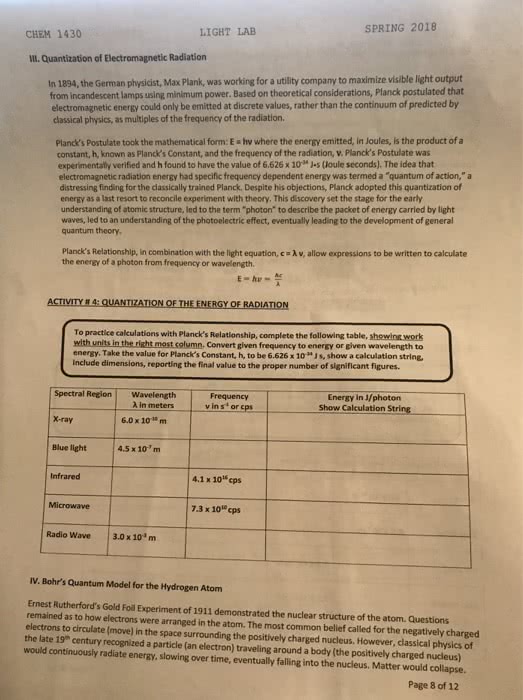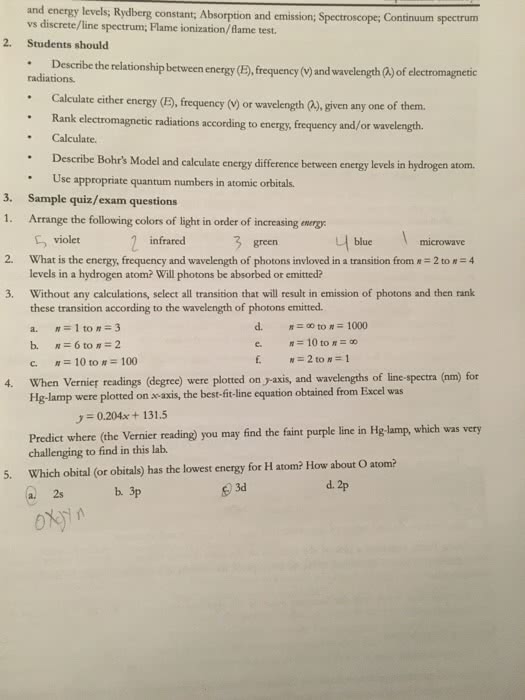CHEM 151 Lecture Notes - Lecture 5: Jmol, Energy, Chemical Substance
Document Summary
Spectroscopy: analytical method based on the analysis of different types of em radiation absorbed or emitted by chemical substances. Em waves are made up of electric and magnetic fields that oscillate in phase perpendicular to each other and perpendicular to the direction in which the wave propagates. Lambda x frequency = speed of propagation (lambda x nu = c) Visible light: 400 nm (violet) to 700 nm (red) The type of em radiation absorbed or emitted by a chemical substance is a differentiating characteristic of the material. = 6. 626 x 10^-34 j planck"s constant: energy transfer during light-matter interactions only occurs in integer multiples of the elementary unit of energy e = hv. Quantized: it can only take a set of discrete values instead of any possible value. In order for an electron to change its energy level, it needs to absorb or release a photon with an energy equal to the difference between two existing energy levels.



